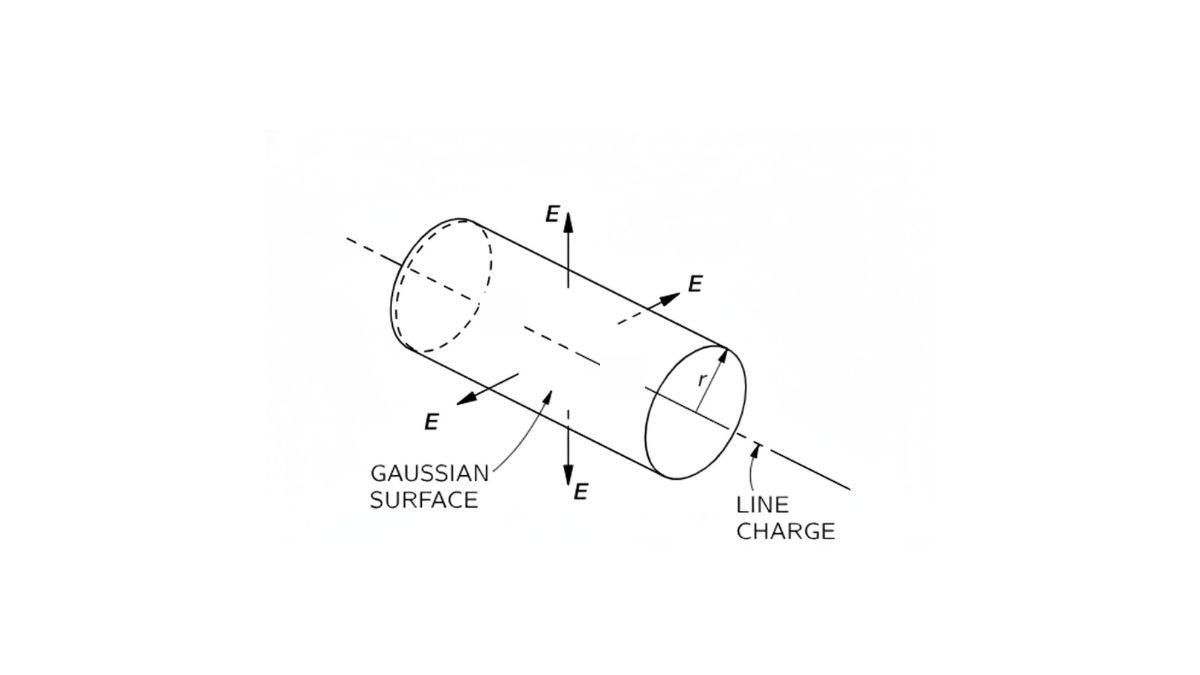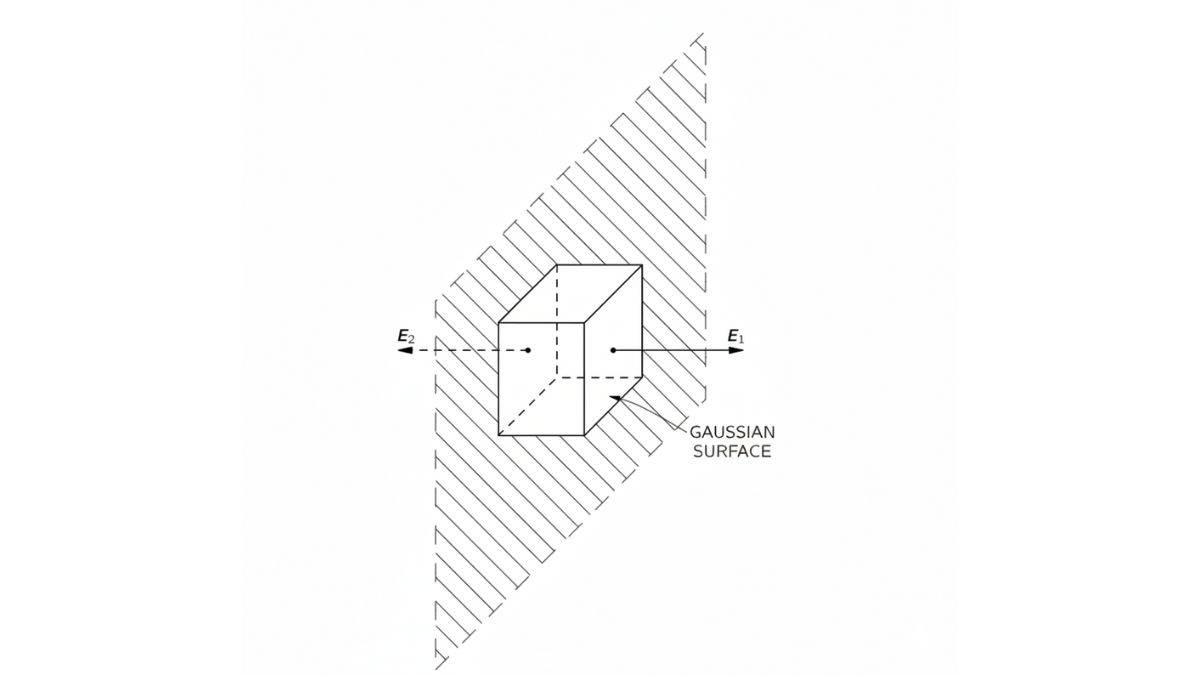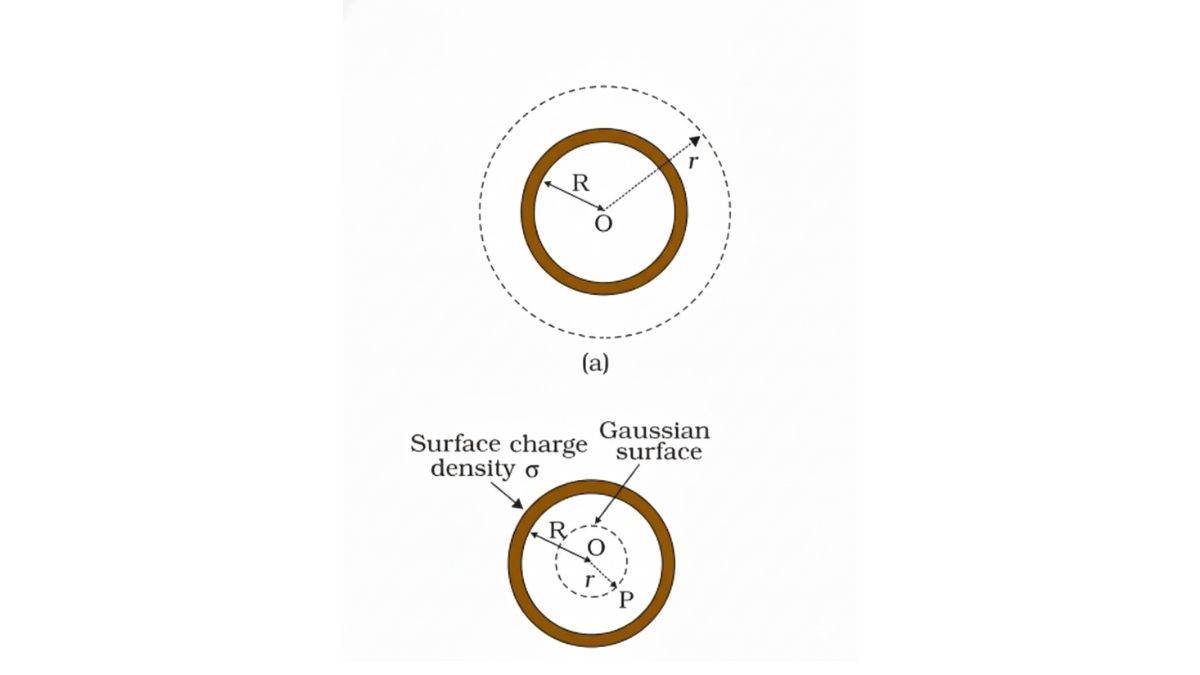
Electric field calculations become much simpler when there’s a symmetric spread of charges. We find symmetry when the charge distributions form perfect shapes. Cylindrical, planar, or spherical. Such geometry enables us to determine the electric fields of different symmetric charge distributions without falling into time-consuming calculus. The simplicity comes from using Gauss’s law. In this article on the application of Gauss’s Law, we cover three ways to derive the electric field expressions for charge configurations, with exam tips for each.
- What are the Applications of Gauss’s Law Class 12 All About?
- Electric Field of a Uniformly Charged Straight Wire
- Electric Field Near a Uniformly Charged Infinite Sheet
- Electric Field of a Uniformly Charged Thin Spherical Shell
- Formulas on the Applications of Gauss’ Law
- Complete Class 12 Study Material
What are the Applications of Gauss’s Law Class 12 All About?
These are the approaches to understanding different symmetries and calculating electrostatic field problems when Gauss' Law applies, and to replacing complex, nearly impossible integrations.
You’ll need to conceptually and mathematically master these three applications of Gauss' Law, which are asked in CBSE and competitive exams.
- Electric Field of a Uniformly Charged Straight Wire
- Electric Field Near a Uniformly Charged Infinite Sheet
- Electric Field of a Uniformly Charged Thin Spherical Shell
These Gauss’ Law applications in Class 12 Electrostatics will also need your previous knowledge of four central concepts.
- Electric Field Lines - These are imaginary curves created when there are positive and negative charges present.
- Electric Flux - This describes how electric field lines behave when passing through an electric field.
- Continuous Charge Distribution - Charge distributions are of different types in physics, where they can be described as along a line, on a surface, or in a volume.
- Gauss’ Law - Applying only to closed surfaces, the total electric flux equals the total electric charge that’s inside divided by the permittivity of free space.
Electric Field of a Uniformly Charged Straight Wire
This is a simple application of Gauss’s Law. The scenario here is a long, thin wire carrying an electric charge that extends indefinitely.
Since it is a straight wire, we can think of it as having a linear charge density, λ.
How are we going to find the electric field in this case?
We will have to assume a few things and apply what we learnt from earlier in the chapter.
- The electric field will point straight and outwards from the wire. The reason is that the opposite sides will be cancelling any sideways effects.
- The strength of the field can be assumed to be equal at all points with the same distance from the wire.
- The radial pattern and uniform strength will be achieved only when the wire is symmetrical.
After these considerations, we’ll apply Gauss' Law by thinking there is a Gaussian surface surrounding this wire. And if you remember, this surface is a construct.
So we will consider this surface to be a cylinder with a common axis along the line. See the below figure.
Electric Field Near a Uniformly Charged Infinite Sheet
Now comes another application of Gauss’s Law. That is, instead of the wire, we have a uniformly charged sheet. What would the electric field calculation look like?
Here, we just assume the electric field lines are outward and perpendicular to the sheet's surface.
And since we are considering that it’s a surface that keeps extending to infinity. We need to look at the charge per unit area. For that, we’d be using the surface charge density expression, which is σ = q/A or σ = q/s (as we use area as A or s).
Now, we move on to consider a closed surface as the Gaussian Law dictates. This surface comes from creating a rectangular box or Gaussian surface that passes through the sheet in parallel. See the figure below.
Electric Field of a Uniformly Charged Thin Spherical Shell
The uniformly charged shell is symmetrical, which gives us one of the most interesting applications of Gauss’s Law.
We can do electric-field calculations inside and outside the shell, a case we haven’t touched upon so far.
Two assumptions are essential when considering a symmetrical sphere with a uniform charge:
- One is that the electric field is radial.
- Second, this field will be equal in magnitude at any point at an equal distance from the centre.
You can see this image for reference, recreated from NCERT.
Formulas on the Applications of Gauss’ Law
- For a uniformly charged straight wire, electric field is
E = λ/2πrε_0 - If it’s an indefinite sheet with uniform electric charge, electric field is
E = = σ/2ε_0 - When it is a uniformly charged spherical shell, the electric field only exists outside the shell, and the formula is
E = q_enc/4πr^2ε_0
Complete Class 12 Study Material
Chances are, you want to learn more and ace your class 12 exams and prepare for the upcoming competitive tests. Find all fresh study material, updated regularly and aligning with the recent NCERT syllabus.
| Complete CBSE Class 12 Study Material |
||
|---|---|---|
Physics Electric Charge and Field Exam
Student Forum
Other Class 12th Physics Chapters
- Physics Alternating Current
- Physics Ray Optics and Optical Instruments
- Physics Electromagnetic Induction
- Physics Dual Nature of Radiation and Matter
- Physics Semiconductor Devices
- Physics Wave Optics
- Physics Current Electricity
- Physics Nuclei
- Physics Electrostatic Potential and Capacitance
- Physics Atoms
- Physics Moving Charges and Magnetism
- NCERT Class 12 Notes
- NCERT Class 12 Physics
- Physics Electric Charge and Field
- Physics Electromagnetic Waves
- Physics Magnetism and Matter



